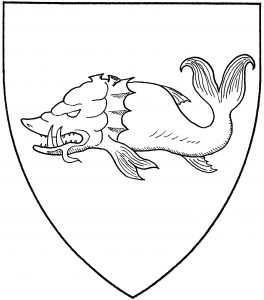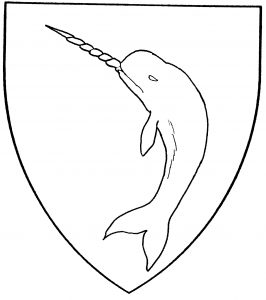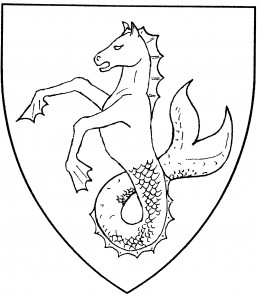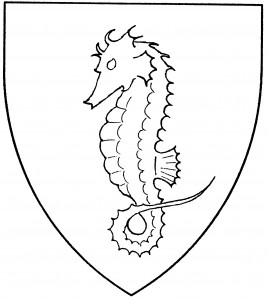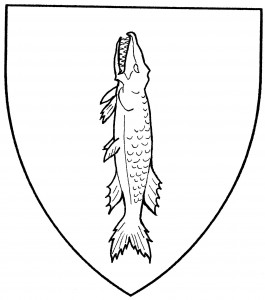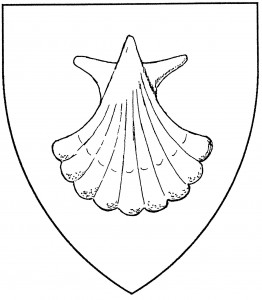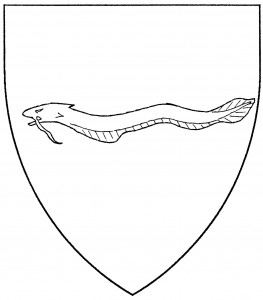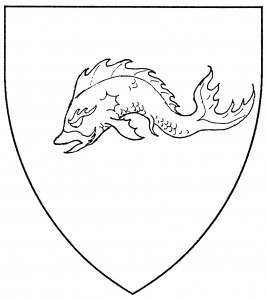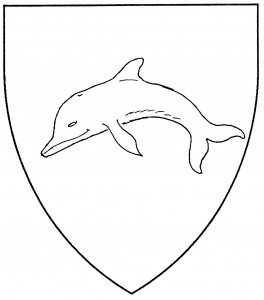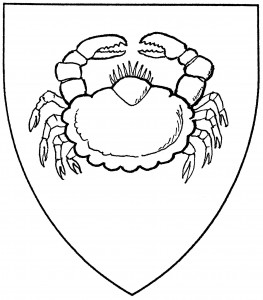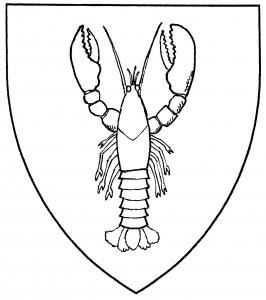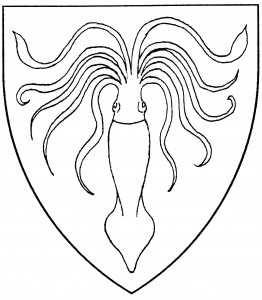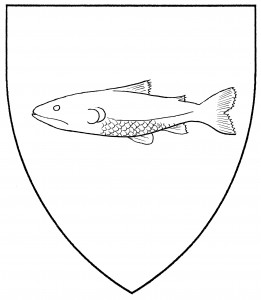
Fish naiant (Period)
The term “fish”, as used in heraldry, refers to any marine creature not a monster. The category includes the generic “fish”, which is drawn more or less like a trout, and which will conflict with all other types of fish. More frequent in period heraldry are specific types of fish, such as the herring, the hake, the roach, and the salmon. The distinctions between these specific types were often blurred: the exact type of fish was frequently chosen for a cant, as in the arms of Herring, Hake, de la Roche, and the Grafs von Salmen, respectively.
Also included in this category are the cetaceans, e.g., the porpoise or natural dolphin, the orca or killer whale, the narwhal, and the natural whale; though now known to be mammals, they are considered fish for heraldic purposes.
Finally, there are the crustaceans, e.g., the crab, the lobster, and the prawn. These too are classed as fish in heraldry. Unlike most other fish, however, crustaceans are tergiant by default.
As may be seen, given the wide variety of types of fish found in period armory, any fish known to period Europeans may be used in Society armory – though, if the fish is not itself European, its use is considered a step from period practice. (An exception would be made for non-European fish actually used in period European armory, but no examples have been adduced.) The examples of fish peculiar to Society armory include the North American “catfish”, the “swordfish”, and the “zydrach” – the latter being a period term for the hammerhead shark.
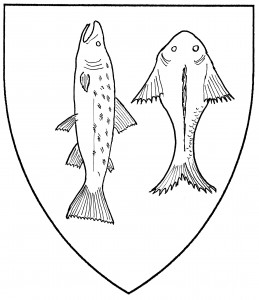
Salmon haurient (Period); chabot tergiant (Period)
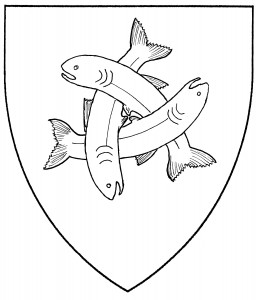
Three fish fretted in triangle (Period)
Fish are in general naiant by default. Other fish postures include “haurient” (head to chief) and “uriant” or “urinant” (head to base); the word “embowed” might be added to any of these, although it is usually unnecessary. Fish “fretted in triangle” are arranged as illustrated; the usage is described in Guillim, 1610 [170]. Non-crustacean fish tergiant are considered a step from period practice; an exception is made for flat fish such as the chabot, in the arms of Cabos or Cabot, c.1400 [Wapenboek Beyeren, fol.25v], where tergiant is their default posture.
In other respects, the fish of Society armory follow the same conventions as those of mundane armory. The illustration shows a salmon haurient and a chabot (tergiant). For specific entries, see: barbel, calamarie, crab, dolphin, eel, lucy, sea-horse (natural), whale.
The Baron of Jararvellir bears: Azure, on a fess between two catfish counternaiant Or, a laurel wreath vert.
The Shire of Frozen Mountain bears as a badge: Three fish fretted in triangle gules.
Margery Colvere bears: Azure, in pale two trout argent.
Ian O Kennavain bears: Vert, a sturgeon in annulo Or.
Sean of Elmhurst bears: Per bend azure and sable, a shark naiant to sinister argent.
Marina Jensdatter bears: Gules, a salmon embowed within a bordure Or.
Jarvis of Hakesleah bears: Purpure, three hakes haurient Or.
Brian of Stonemarche bears: Argent, a chevron inverted sable between a chabot gules and two chabots azure.
